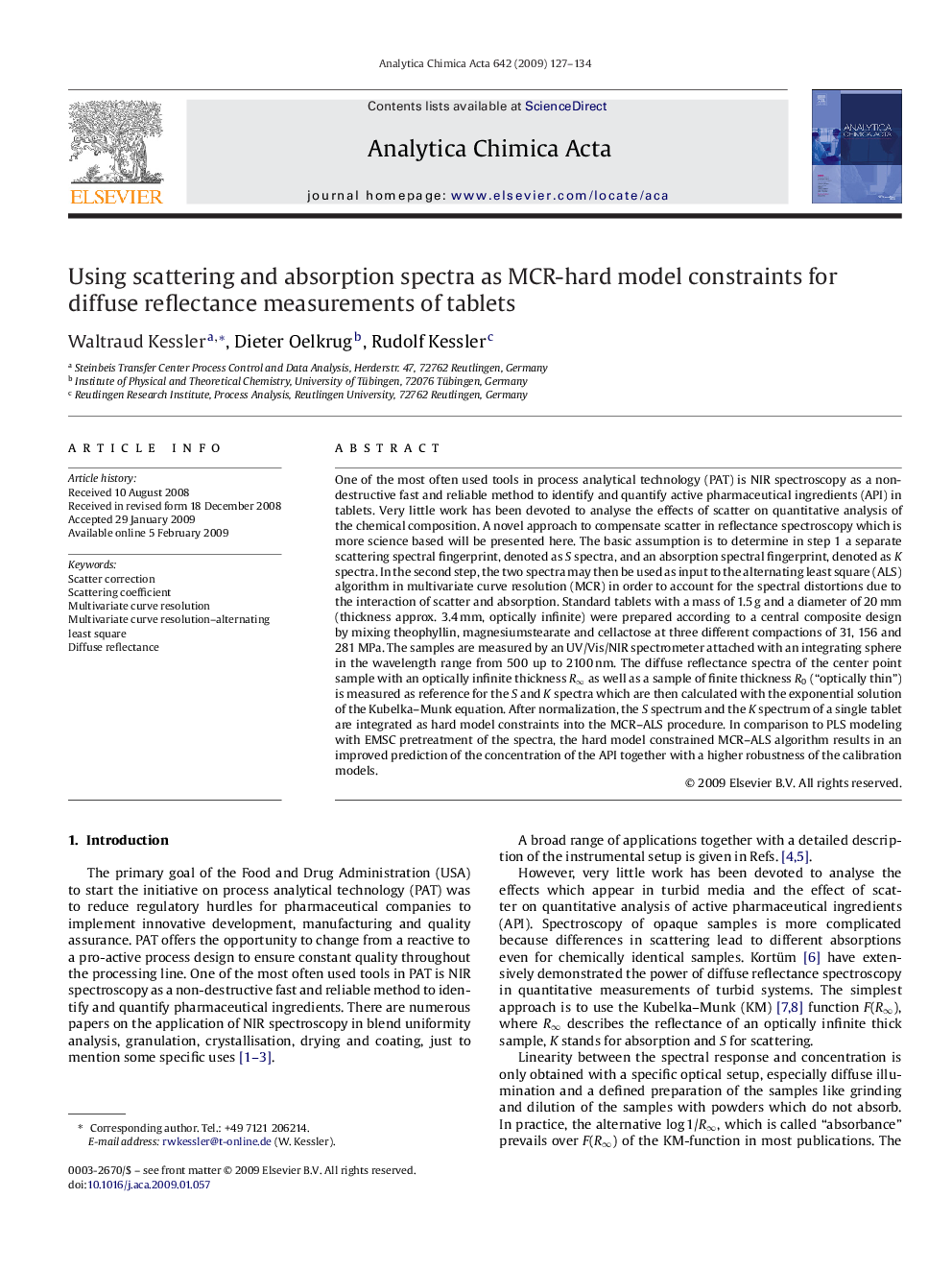| کد مقاله | کد نشریه | سال انتشار | مقاله انگلیسی | نسخه تمام متن |
|---|---|---|---|---|
| 1168817 | 1491161 | 2009 | 8 صفحه PDF | دانلود رایگان |

One of the most often used tools in process analytical technology (PAT) is NIR spectroscopy as a non-destructive fast and reliable method to identify and quantify active pharmaceutical ingredients (API) in tablets. Very little work has been devoted to analyse the effects of scatter on quantitative analysis of the chemical composition. A novel approach to compensate scatter in reflectance spectroscopy which is more science based will be presented here. The basic assumption is to determine in step 1 a separate scattering spectral fingerprint, denoted as S spectra, and an absorption spectral fingerprint, denoted as K spectra. In the second step, the two spectra may then be used as input to the alternating least square (ALS) algorithm in multivariate curve resolution (MCR) in order to account for the spectral distortions due to the interaction of scatter and absorption. Standard tablets with a mass of 1.5 g and a diameter of 20 mm (thickness approx. 3.4 mm, optically infinite) were prepared according to a central composite design by mixing theophyllin, magnesiumstearate and cellactose at three different compactions of 31, 156 and 281 MPa. The samples are measured by an UV/Vis/NIR spectrometer attached with an integrating sphere in the wavelength range from 500 up to 2100 nm. The diffuse reflectance spectra of the center point sample with an optically infinite thickness R∞ as well as a sample of finite thickness R0 (“optically thin”) is measured as reference for the S and K spectra which are then calculated with the exponential solution of the Kubelka–Munk equation. After normalization, the S spectrum and the K spectrum of a single tablet are integrated as hard model constraints into the MCR–ALS procedure. In comparison to PLS modeling with EMSC pretreatment of the spectra, the hard model constrained MCR–ALS algorithm results in an improved prediction of the concentration of the API together with a higher robustness of the calibration models.
Journal: Analytica Chimica Acta - Volume 642, Issues 1–2, 29 May 2009, Pages 127–134